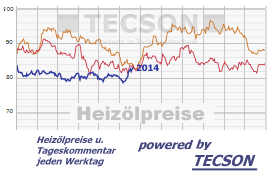Making investments is among the finest strategies to safeguard your financial future. The emotional rollercoaster that comes with investment might be lessened by investing long-term.
Choose from extremely secure choices like a CD or crank up the risk (and possible reward!) with investments like equities, mutual funds, or ETFs.
By wisely investing, you may keep up with growing inflation and amass money according to your terms.
When profits from sound investments are reinvested, your initial investment can grow over time because of compound interest.
The list of top investments for 2023 includes both long-term and short-term investments and a range of risk factors for each.
What Sectors To Approach?
Investors expect a better 2023 after this year’s global markets saw one of their worst years.
The global economy will grow at a meager 1.6 percent this year, predicts J.P. Morgan Global Research.
The short-term forecast is unsettling since it appears the US economy will enter a recession within the next two years.
Stocks in the healthcare, technology, and consumer discretionary sectors are anticipated to be better positioned to weather these storms.
Given below are three main sectors where you can turn your attention in 2023—
The Consumer Staples Sector
Consumer staples are essential items that customers must always have on hand. Given that the need for basics is guaranteed, the industry provides one of the most resilient investment options.
Consumer staples‘ defensive character made it possible for the sector to do better than the overall market last year.
Compared to the benchmark index’s overall loss of 18%, the S&P 500 Consumer Staples (sector) lost only 3.5%.
Companies that sell necessities that customers are likely to purchase regardless of the economy might perform exceptionally well in 2023.
According to Fidelity Investments, consumers may be more sensitive to future price increases than prior ones.
Companies that can raise prices higher without reducing sales volumes may be best positioned for this background.
The middle class in emerging countries is developing more quickly than in developed markets, and consumers are more used to price increases due to these economies‘ lengthy histories of fighting inflation.
It is advised to look at consumer goods businesses like Nestle, Reckitt Benckiser, and Unilever that have exposure to developing nations.
Healthcare Sector
For years, if not decades, the effects of the epidemic will be felt. Few sectors have undergone more radical transformations than healthcare has and continues to undergo.
Similar to consumer staples, the defensive healthcare industry does better during recessions.
The iShares U.S. Healthcare ETF lost around 4.4 percent in 2022, while the S&P 500 lost over 18%.
Although the coronavirus threat seems to have diminished recently, the revelation of yet another lethal COVID strain is nonetheless not inconsequential. Beyond the Omicron variety, other mutations could also appear.
According to Jeffrey Barrett, the former director of the COVID-19 genomic surveillance program, „I think there’s a realistic argument that we won’t be locked on a novel variation treadmill forever.“ September.
Covid vaccinations have aided in lowering mortality, and there is optimism that we may one day create a reliable viral defense.
However, we have yet to determine when it will occur, and we have no way of knowing if Omicron is one of its final alternatives.
The virus will eventually become endemic, infecting mainly people with weak or underdeveloped immune systems until we have defenses against all forms of COVID.
Precious Metal Sector
The argument for gold, silver and other precious metals has become stronger as most equities and bond markets suffer at least a portion of this year.
The U.S. Federal Reserve’s (the Fed’s) rate rises have recently slowed down, which raises the possibility that the dollar’s strength may have already peaked last year.
The world’s most sought-after commodities are precious metals, which are seen as reliable inflation hedges and stores of value.
Due to the present market conditions, precious metals will be especially alluring this year due to their historical reputation as reliable value stores.
However, until prices again rise, investors still have a tempting entry position to increase their exposures.
Since the Great Financial Crisis, central banks have kept increasing the amount of gold in their holdings.
A new all-time high for gold above $2,100 may be reached in 2023, marking the beginning of a „new secular“ bull market.
As a result, we predict that gold will conclude 2023 at least 20% higher and that miners will perform twice better than gold.
Best Investments Ideas For 2023
Given below are some of the best investment ideas that you must follow in 2023—
Growth Stocks
Growth stocks are the Ferraris of the stock investment world. Excellent growth and high investment returns are what they claim.
Tech businesses are frequently growth stocks, although this is optional.
They seldom provide dividends since they typically invest all of their revenues into the company. Over time, growth stocks have been among the top performers.
Growth stocks are volatile. Therefore, you should have a high-risk tolerance or be prepared to keep the equities for at least three to five years.
Growth stocks may be dangerous since investors sometimes pay a high price.
Real Estate
Real estate is, in many respects, the archetypal long-term investment. You can borrow money from the bank and repay it over time for most investments.
This lowers your initial financial risk and allows you to profit from the property’s long-term appreciation.
Although owning real estate is a fantastic method to increase wealth, hazards are involved.
You will have to continue paying the mortgage and other maintenance expenses out of your own pocket if you don’t have a renter for the property.
However, if you choose a nice property and take excellent care of it, you may make several times your initial investment.
Index Funds
A kind of mutual fund known as an index fund has a portfolio closely resembling the index it tracks.
Equities and securities connected to equity, such as bonds, may be included in the portfolio of such a fund.
With indices trading, you can utilize passive management, where the fund managers are only responsible for building a portfolio that closely resembles the index.
If the above elements align with your investment objectives and risk tolerance, index funds may be the best choice for corpus formation.
This increase in the Sensex and Nifty, which was previously highlighted, might serve as an illustration.
The financial markets may become quite unpredictable, and past performance may not necessarily be a reliable predictor of the future.
Stock Funds
A stock fund is a collection of equities, sometimes tied together by a common theme or classification, such as big or American stocks.
Investors should understand the risks associated with investing in a fund.
A stock fund is a great option if an investor wants to use stocks more aggressively but needs more time or motivation to make investments their full-time pastime.
A stock fund will often be less volatile than holding a small number of individual stocks since you will receive the weighted average return of all the firms in the fund.
You will benefit from the diversification provided by an investment in a fund that follows the S&P 500, but you still risk being exposed to larger market fluctuations.
Bond Funds
A bond fund, whether a mutual fund or an exchange-traded fund (ETF), includes several bonds from many issuers.
Bond funds are a viable option for investors who desire a diverse portfolio of bonds without having to research and purchase individual bonds.
A bond fund will be reasonably steady even if bonds can vary and may move in reaction to changes in the current interest rate.
Bond funds are financial instruments that let investors gain exposure to a range of bonds without having to buy each one separately.
A fund diversifies its assets and lowers the effect of any one bond failing on the portfolio because it may own hundreds of various bond kinds from several different issuers.
Dividend Stocks
A stock that pays a dividend, or a regular cash distribution, is just one that does that. Older investors choose REITs (Real Estate Investment Trusts) as a dividend investment option because they offer a consistent and dependable income stream.
Despite the fact that dividend stocks are often less erratic than growth companies, don’t assume they will have substantial ups and downs.
The payment makes dividend stocks appealing, and some of the best businesses can increase their dividends by 8 or 10 percent annually for extended periods.
Since dividend distributions are split across all of the fund’s holdings, dividend stock funds can also be useful for investors seeking a consistent income.
Value Stocks
Value stocks are those that score lower on price-earnings ratios and other valuation criteria.
Growth stocks, which often expand quicker and have greater values, are compared with value stocks.
Many investors look to value stocks to be more defensive when the market rises sharply.
Value stocks are appealing because they offer above-average returns with lower risk. Value stocks tend to fall less when the market declines because they frequently have less downside.
They are available for purchase from any online broker that facilitates stock trading. Recently, the Federal Reserve has been hiking interest rates quickly.
Plan Safe For The New Year!
Your goals, budget, risk tolerance, and the time you’re ready to wait for rewards all come into play when determining the safest investment for you.
You should determine how much money you can risk comfortably before investing.
You can make sure you choose your investments wisely by taking the time to evaluate your unique needs.
PM











